 W
WVitis (grapevines) is a genus of 79 accepted species of vining plants in the flowering plant family Vitaceae. The genus is made up of species predominantly from the Northern hemisphere. It is economically important as the source of grapes, both for direct consumption of the fruit and for fermentation to produce wine. The study and cultivation of grapevines is called viticulture.
 W
WAmpelography is the field of botany concerned with the identification and classification of grapevines, Vitis spp. Traditionally this has been done by comparing the shape and colour of the vine leaves and grape berries; more recently the study of vines has been revolutionised by DNA fingerprinting.
 W
WVitis aestivalis, the summer grape, or pigeon grape is a species of grape native to eastern North America from southern Ontario east to Maine, west to Oklahoma, and south to Florida and Texas. It is a vigorous vine, growing to 10 m or more high in trees. The leaves are 7–20 cm long, suborbicular, and usually a little broader than long; they are variable in shape, from unlobed to deeply three- or five-lobed, green above, and densely hairy below. The flowers are produced at every 3rd node in a dense panicle 5–15 cm long. The fruit is a small grape 5–14 mm diameter, dark purple or black in colour. It is the official state grape of Missouri. Summer grape prefers a drier upland habitat.
 W
WVitis amurensis, the Amur grape, is a species of grape native to the Asian continent. Its name comes from the Amur Valley in Russia and China.
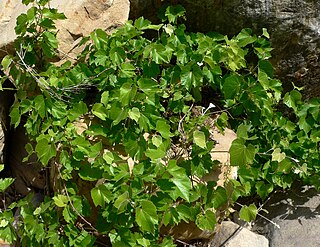 W
WVitis arizonica is a North American species of wild grape. It is a deciduous vine.
 W
WAustralia has over 160 grape varieties distributed on 146,244 hectares (ha) across all six states, South Australia, New South Wales, Victoria, Western Australia, Tasmania and Queensland. These activities are concentrated largely in the southern part of the continent where the terroir - that is, soil types, local climate, availability of irrigation and so on - is suited to viticulture.
 W
WVitis bellula, commonly known as the beautiful grape or small leaf hair grape, is a Chinese liana in the grape family. It is native to the provinces of Guangdong, Guangxi, Hubei, Hunan, and Sichuan. The plant grows at altitudes of 400–1,600 m (1,300–5,200 ft) and bears medium sized purplish-black grapes.
 W
WVitis berlandieri is a species of grape native to the southern North America, primarily Texas, New Mexico and Arkansas.
 W
WVitis bryoniifolia is a prolific and adaptable, polygamo-dioecious species of climbing vine in the grape family native to China, where it is known as ying yu, or hua bei pu tao. The variant form ternata is known as san chu ying yu, meaning three-foliolate, or -leaflet ying yu. Ying yu translates to mean "hard jade".
 W
WVitis californica, with common names California wild grape, Northern California grape, and Pacific grape, is a wild grape species widespread across much of California as well as southwestern Oregon.
 W
WVitis cinerea, the graybark grape, is a variety of grape. It has small black berries that are mildly unpleasant to eat. Plentiful in Missouri and Louisiana, it is also found throughout the eastern half of the US as far west as Texas, north to Illinois, and south to Florida. It is also known by the name winter grape or possum grape.
 W
WVitis coignetiae, called crimson glory vine, is a plant belonging to the genus Vitis that is native to the temperate climes of Asia, where it can be found in the Russian Far East, (Sakhalin); Korea; and Japan. It was described botanically in 1883. It is called meoru (머루) in Korean and yama-budo (ヤマブドウ) in Japanese.
 W
WVitis davidii is a species of vining plant native to Asia. The plant grows to a height of up to 8 m (25 ft) and bears small, black grapes. It is also known as the chinese bramble grape.
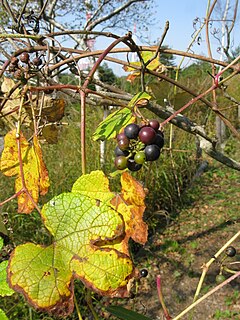 W
WVitis ficifolia is a species of liana in the grape family native to the Asian temperate climate zone. It is found in mainland China, Japan, Taiwan and the Koreas.
 W
WVitis flexuosa is a species of liana in the grape family.
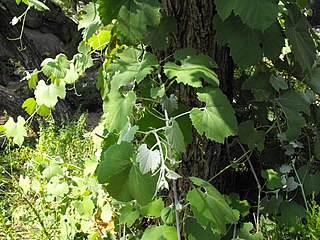 W
WVitis girdiana is as species of wild grape known as the desert wild grape, coyote grape, or valley grape. It is native to southern California in the United States and to Baja California in Mexico.
 W
WVitis mustangensis, commonly known as the mustang grape, is a species of grape that is native to the southern United States. Its range includes parts of Mississippi, Alabama, Louisiana, Texas, and Oklahoma.
 W
WVitis palmata is a New World species of tall, climbing liana in the grape family native to the south-central and southeastern parts of the United States, from Texas east to Florida and northwards along the Mississippi Valley to Illinois. There are additional reports of isolated populations in the Northeast, but these are probably introductions.) The species does best in wet habitats but is adaptable enough to occasionally take root in higher-ground habitats. It is sometimes found at the edges of fences.
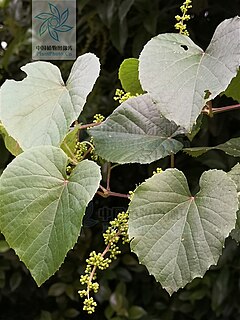 W
WVitis pseudoreticulata, commonly known as the wild Chinese grape or eastern Chinese grape, is a Chinese liana in the grape family. It is native to eastern China, specifically the provinces of Anhui, Fujian, Guangdong, Guangxi, Henan, Hubei, Hunan, Jiangsu, Jiangxi, and Zhejiang. The plant grows at altitudes of 100–300 m (330–980 ft) and bears medium sized purplish-black grapes. It has been observed to be resistant to damage from moisture, white rot, anthracnose, and Downy mildew.
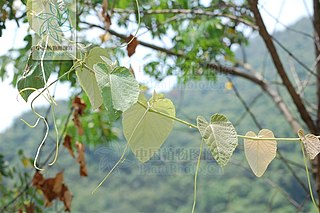 W
WVitis retordii is a species of vining plant native to Asia. The plant grows at an altitudes of 200–1,000 m (660–3,280 ft) and bears large grapes. It is also known as the woolly grape.
 W
WVitis riparia Michx, with common names riverbank grape or frost grape, is a vine indigenous to North America. As a climbing or trailing vine, it is widely distributed across central and eastern Canada and the central and northeastern parts of the United States, from Quebec to Texas, and eastern Montana to Nova Scotia. There are reports of isolated populations in the northwestern USA, but these are probably naturalized. It is long-lived and capable of reaching into the upper canopy of the tallest trees. It produces dark fruit that are appealing to both birds and people, and has been used extensively in commercial viticulture as grafted rootstock and in hybrid grape breeding programs.
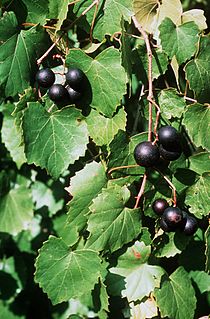 W
WVitis rotundifolia, or muscadine, is a grapevine species native to the southeastern and south-central United States. The growth range extends from Florida to New Jersey coast, and west to eastern Texas and Oklahoma. It has been extensively cultivated since the 16th century. The plants are well-adapted to their native warm and humid climate; they need fewer chilling hours than better known varieties, and thrive in summer heat.
 W
WVitis rupestris is a species of grape native to the United States that is known by many common names including July, Coon, sand, sugar, beach, bush, currant, ingar, rock, and mountain grape. It is used for breeding several French-American hybrids as well as many root stocks.
 W
WVitis shuttleworthii is a North American liana in the grape family commonly known as the calloose grape or bear grape. The name refers to the group of Native American people that resided in southwest FL, the Calusa. It is native to south and central Florida, with isolated populations in southern Alabama.
 W
WVitis sinocinerea, commonly known as the lobular grape or small-leaved grape, is a species of climbing vine in the grape family ranging widely over much of the Chinese mainland as well as Taiwan. In Chinese it is known as xiao ye pu tao, which can be translated as small-leaved grape. Its natural habitat is within forested or shrubby hills.
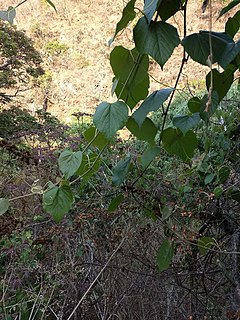 W
WVitis tiliifolia is a New World liana in the grape family commonly known as Caribbean grape. Other names include West Indian grape, water vine, and water tie-tie and water-wise.
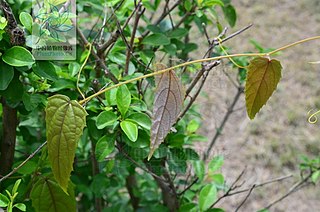 W
WVitis tsoii is a species of wild grape in the family Vitaceae. It is native to the provinces of Fujian, Guangdong, and Guangxi in China, where the climate is temperate.
 W
WVitis vinifera, the common grape vine, is a species of flowering plant, native to the Mediterranean region, Central Europe, and southwestern Asia, from Morocco and Portugal north to southern Germany and east to northern Iran. There are currently between 5,000 and 10,000 varieties of Vitis vinifera grapes though only a few are of commercial significance for wine and table grape production.
 W
WVitis 'Ornamental Grape', also known as ornamental grapevine, Ganzin glory, glory vine and crimson glory, is a nonfruiting ornamental plant that is a hybrid of Vitis vinifera and Vitis rupestris.
 W
WVitis vulpina is a North American species of herbaceous perennial vines in the grape family. It is widespread across most of the eastern and central United States as well as the Canadian Province of Ontario.
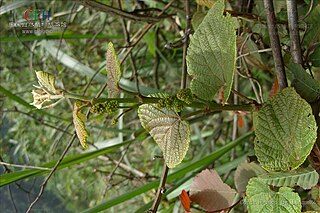 W
WVitis wilsoniae is a vining plant in the grape family native to China. It is commonly known as the net veined grape or reticulated grape. This species can be found in the provinces of Anhui, Chongqing, Fujian, Gansu, Guizhou, Henan, Hubei, Hunan, Shaanxi, Sichuan, Yunnan, and Zhejiang. The plant grows at altitudes of 400-2000m.